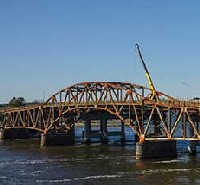The Norwegian Public Roads Administration (NPRA) has been commissioned by the government to carry out planning and studies with the aim of turning the E39 coastal highway into a ferry-free route. Seven of the fjords on the E39 are served only by ferries at present and NPRA is looking at various options to build fixed links, including suspension bridges, floating bridges and submerged floating tunnels. Combinations of the three are also being considered. The fjords vary in depth from 550m to 1,300m and are up to 4km wide. Information is needed to enable the designs to take account of the wind, current and wave conditions.
The Fugro contract relates to three of the fjords - Sulafjord, Vartdalsfjord and Halsafjord - and entails measurements of onshore and offshore wind profiles, subsea and surface waves, and current profiles. The agreement will run over a period of 12 years at 12 sites, starting with a measuring period of four years, with the possibility of two extensions of four years each. The contract price is for the first eight years of the contract.
Wind profiling will be carried out using several 80m to 100m onshore masts together with offshore buoys equipped with LiDAR (light detection and ranging) surveying technology. A new method, involving the use of several LiDARs, will measure both wind-speed profiles and turbulence above the fjords. The aim is to provide better information about the wind forces at what would be the level of the road between bridge towers.

Fugro will undertake the measurement project with contributions from specialists in Norway, including R&D institutions.
The measurements will run continuously from the planning phase until the bridges are commissioned.





